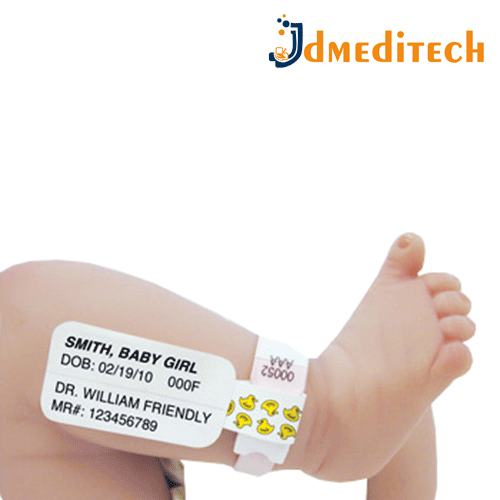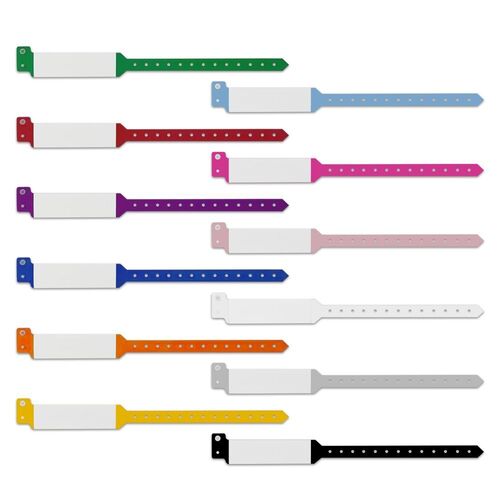Exploring the Various Kinds Of Patient Identification Band Made Use Of in Clinical Facilities
In the intricate world of healthcare, the vital function of Patient Identification bands often goes undetected. These bands, varying from simple paper wristbands to innovative RFID bands, develop the backbone of Patient safety and security procedures, making sure accuracy in Patient Identification.
Recognizing the Value of Patient Identification Bands
While they may appear like simple devices, Patient Identification bands play an important role in clinical centers. These bands serve as a vital tool for confirming Patient identity, avoiding clinical mistakes related to misidentification. Patient Identification bands likewise help in simplifying administrative tasks, making sure precise record-keeping and billing.
Conventional Paper Wristbands: Their Usage and Limitations
Typical paper wristbands have been a staple in Patient Identification throughout various medical facilities. While their usage is prevalent, they harbor particular constraints that might affect their efficiency in Patient monitoring. This section will certainly concentrate on the scope of their application and the fundamental downsides connected with their usage.
Paper Wristbands: Use Scope
In the realm of Patient Identification, paper wristbands have actually long held a critical duty. These bands are usually used in outpatient settings, where the Patient's keep is temporary. In spite of improvements in modern technology, the simple paper wristband continues to be a cost-effective and trusted remedy for Patient Identification in numerous healthcare scenarios.
Limitations of Paper Wristbands
Regardless of their widespread usage, paper wristbands are not without their downsides. Their physical durability is just one of the considerable constraints. Exposure to water, sweat, or rough handling can render them unreadable or even trigger them to degenerate. Furthermore, paper wristbands often lack the technological capabilities of more modern options, such as barcoding or RFID chips, limiting their capability to merely presenting composed info. The lack of ability to upgrade or customize the information on the wristband is one more imperfection. If the information is handwritten, legibility can be jeopardized, leading to possible misidentification. Ultimately, paper wristbands can cause pain or skin irritability to some people, specifically when put on for extended periods.
Barcoded Wristbands: Improvements in Patient Identification
While Patient Identification has actually long been an important aspect of health care, the introduction of barcoded wristbands symbolizes a substantial leap ahead. These bands leverage the simpleness of barcoding technology, allowing for Patient information to be rapidly checked and accessed. They boost the speed and accuracy of Patient Identification, minimizing the danger of clinical mistakes connected to misidentification.
Radio Frequency Identification (RFID) Bands: an Action Towards Futuristic Medical Care
The evolution of Patient Identification bands has actually produced the emergence of Superhigh frequency Identification (RFID) Bands (patient identification band). These ingenious devices present vital benefits for health care centers, offering an extra effective and technically advanced methods of Patient Identification. The execution of RFID in health care is a considerable step in the direction of a much more futuristic approach to Patient management and safety and security
Recognizing RFID Bands

RFID Bands: Secret Benefits
Primarily, these bands boost Patient safety and security by providing exact, immediate Identification, consequently minimizing medical errors. RFID bands can keep a substantial amount of Patient data, including medical history and allergic reactions, making it possible for individualized care. On the whole, RFID bands represent a substantial improvement in Patient Identification modern technology, profiting both people and healthcare companies.
Executing RFID in Health Care
As we enter a highly innovative period, the execution of RFID bands in medical care comes to be significantly essential. click now These bands provide a seamless way to track and recognize people, guaranteeing their safety and security and boosting performance in therapy procedures. RFID bands provide various benefits over traditional Identification approaches. They can keep a huge amount of data, consisting of the Patient's clinical history and treatment plans, which can be conveniently accessed by doctor. This information assists doctors make informed choices relating to the Patient's therapy plan. RFID bands minimize medical mistakes by offering accurate Patient Identification, which is critical in avoiding misdiagnosis or wrong medicine administration. Thus, the execution of RFID bands is a considerable action towards boosting Patient safety and security and medical care shipment.

Color-Coded Wristbands: Assisting in Quick and Accurate Diagnosis
In the bustling setting of a clinical center, color-coded wristbands have actually become vital tools for swift and accurate Identification of an individual's clinical condition. These wristbands, put on by individuals, carry particular colors that match to various medical conditions or statuses. For instance, red can suggest allergic reaction threats, while yellow could indicate an autumn risk. This system is created to provide prompt aesthetic cues to doctor, improving Patient security and care quality. In emergency situation situations, making use of these wristbands permits fast decision-making. Nonetheless, the efficiency of color-coded wristbands relies on the uniformity of shade interpretation throughout healthcare establishments, requiring typical standards for constant application.
Techniques for Efficient Application and Monitoring of Patient ID Bands
Achieving optimal use Patient Identification bands requires a well-structured method for their execution and monitoring. The initial step entails training all wellness employees on the importance of correctly applying and reading these bands. Health centers should standardize the usage of ID bands throughout all divisions, making sure harmony and decreasing inconsistencies. Regular audits ought to be conducted to confirm adherence to plans and to rectify any inconsistencies. Patient education and learning is likewise important; clients should understand the purpose of the bands and the demand for their continuous wear. patient identification band. It's vital to have a backup strategy in location, such as useful source barcode scanning or biometrics, to guarantee that Patient Identification is never ever endangered.
Final thought
Patient Identification bands are essential in medical centers to ensure safety and precision. Traditional paper, barcoded, RFID, and color-coded wristbands each hold one-of-a-kind benefits, varying from cost-effectiveness to innovative data storage and instant clinical notifies. Reliable application and administration of these bands can dramatically reduce medical mistakes, improve performance, and boost total Patient treatment. Therefore, understanding and making use of these Identification tools is paramount click for preserving high requirements in healthcare.
These bands, varying from easy paper wristbands to sophisticated RFID bands, develop the foundation of Patient safety and security protocols, guaranteeing precision in Patient Identification.The evolution of Patient Identification bands has actually brought about the emergence of Radio Frequency Identification (RFID) Bands. Overall, RFID bands represent a significant improvement in Patient Identification modern technology, profiting both people and medical care providers.
RFID bands reduce clinical mistakes by supplying exact Patient Identification, which is crucial in avoiding misdiagnosis or wrong medication management. Patient education is also crucial; patients have to comprehend the function of the bands and the requirement for their constant wear.